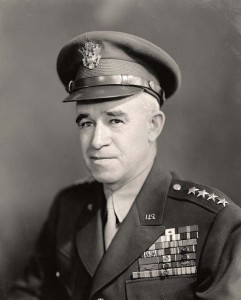
By Maricarrol Kueter For S.D. Newspaper Association
Crime victims would be told when perpetrators appear in court or get out of jail under proposed Constitutional Amendment S on the Nov. 8 general election ballot.
Proponents say the measure, known as Marsy’s Law, is needed to protect crime victims and to allow them to participate in the judicial process.
But opponents say the victims-right measure is too expansive and would drain county budgets while stressing prosecutors.
The measure is named for Marsalee (Marsy) Nicholas, a California university student who was stalked and killed by an ex-boyfriend. Her family members saw the accused man in a store a week later. They did not know he had been released from jail.
Nicholas’ brother pushed for the bill’s passage in California. Illinois also has approved
it and it has been proposed in seven states in addition to South Dakota.
Proponents say the amendment offers crime victims constitutional protections already afforded to accused offenders. “No rapist should have stronger rights than their victim,” said Jason Glodt, the state director of Marsy’s Law for South Dakota in an email.
In addition to requiring notifications, the proposed amendment would guarantee victims input into the prosecution of their cases and would allow them to confer with prosecutors before any plea agreement was finalized.
The South Dakota State’s Attorneys Association and State Bar of South Dakota have opposed the measure.
Representatives of those organizations say its requirement for prosecutors to notify and involve crime victims in all cases will be time-consuming and could potentially interfere with prosecutors’ ability to spend time on the most serious crimes. And, says Ryan Kolbeck, a Sioux Falls lawyer, the extensive notice requirements will cost budget-strapped county governments money they don’t have. “The counties are broke,” Kolbeck, president of the South Dakota Association of Criminal Defense lawyers, said in an email. “If this passes, the counties will bear the responsibility of the majority of the costs of enforcing.”
Kolbeck said expensive enhancements would need to be made to the statewide computer court records system in order to provide the required notice and to allow more expansive tracking of court cases. Opponents say state law currently provides rights to victims of violent crime. Any possible expansions would be better made through the legislative process, not through constitutional amendment. In addition, they say some of the proposed law’s provisions could conflict with the rights of the accused. But Glodt said existing crime victim protections currently apply only to those who are victims of certain serious crimes. Victims of arson, simple assault and hate crimes, for example, are not included in the protections.
South Dakota is “one of the last remaining states to pass constitutional rights for crime victims.” Glodt said. Thirty-two states have at least some protections for victims written into their constitutions.
AMENDMENT R – New governance for technical institutes
South Dakota’s four technical institutes are essential players in the state’s continuing efforts to develop and attract workers.
Constitutional Amendment R would put into the state constitution a new governing structure for those schools. Supporters of the amendment say the current system of oversight for Lake Area Technical Institute, Mitchell Technical Institute, Southeast Technical Institute and Western Dakota Technical Institute doesn’t allow them to be focused exclusively on workforce training needs.
Amendment R would shift responsibility for that oversight from local K-12 school boards to a new governing board determined by the legislature. The new board would not be under the South Dakota Board of Regents, which has oversight of the state’s public universities. Tech schools have a different mission than the degree-granting universities, supporters say. Proponents say the change would help the technical institutes be more responsive in developing skills training as needed to meet the state’s workforce needs.
Rep. Mark Mickelson, Sioux Falls, said in an email that the amendment would provide for “dedicated decision making” for technical education issues.
Such a change would necessitate the establishment of a new, unelected governing board that would be heavily influenced by lobbyists and favored industries, according to Rep. Elizabeth May, of Kyle, who opposes the change. She also pointed to concerns that other laws ultimately might shift the cost of technical schools from the state budget onto local governments.Mickelson said details on the governing board structure are yet to be decided, but it “would likely consist of a citizen board” with some employer representation. The technical schools and the Board of Regents as well as state business and industry representatives support the proposed changes.
Ten questions are on the Nov. 8 general election ballot. You can learn more about the various ballot questions at the S.D. Secretary of State’s website





